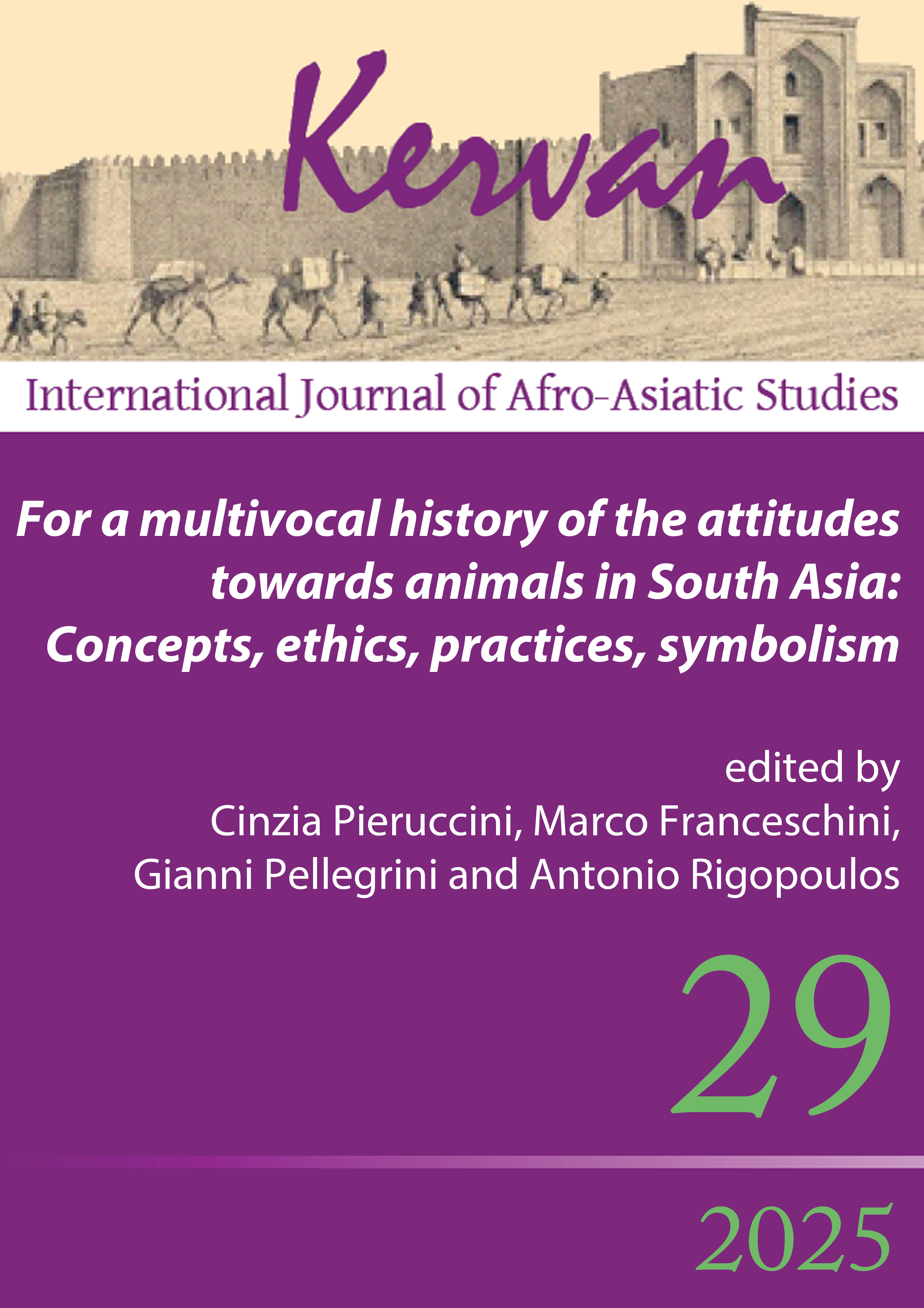Can animal characters be ‘receptacles of rasa’? An overview of the positions held on this issue in classical Indian treatises on poetics
DOI:
https://doi.org/10.13135/1825-263X/12161Abstract
In classical Indian aesthetics, the ultimate goal of kāvya (dramatic and literary art) is the arousal of aesthetic experience, called rasa (‘juice’) in Sanskrit. A fundamental role in this process is played by the characters in the works, as some theorists place in them the locus of manifestation of rasa, while others consider them the necessary medium through which rasa is aroused in the spectator/reader. As a rule, Indian theory admits only human characters to this process, sometimes also semi-divine or divine characters; however, there are cases in which it seems clear that the role of receptacle of rasa is played by characters in animal form. This article presents an overview of the views of leading pre-modern Indian theorists on the admissibility of an animal character being the locus of rasa.
Downloads
Downloads
Published
Issue
Section
License
Gli autori che pubblicano su Kervan accettano le seguenti condizioni:
- Gli autori mantengono i diritti sulla loro opera e cedono alla rivista il diritto di prima pubblicazione dell'opera, contemporaneamente licenziata sotto una Licenza Creative Commons - Attribuzione che permette ad altri di condividere l'opera indicando la paternità intellettuale e la prima pubblicazione su questa rivista.
- Gli autori possono aderire ad altri accordi di licenza non esclusiva per la distribuzione della versione dell'opera pubblicata (es. depositarla in un archivio istituzionale o pubblicarla in una monografia), a patto di indicare che la prima pubblicazione è avvenuta su questa rivista.


 The articles that have appeared on Kervan since 2016 are rated as Class A in the system of National Scientific Qualification (ASN, disciplines 10/N1 and 10/N3).
The articles that have appeared on Kervan since 2016 are rated as Class A in the system of National Scientific Qualification (ASN, disciplines 10/N1 and 10/N3). The journal has been approved for inclusion in DOAJ. The DOAJ listing of the journal is available at
The journal has been approved for inclusion in DOAJ. The DOAJ listing of the journal is available at  The journal has been approved for inclusion in ERIH PLUS. The ERIH PLUS listing of the journal is available at
The journal has been approved for inclusion in ERIH PLUS. The ERIH PLUS listing of the journal is available at  Kervan was just accepted for indexing in SCOPUS. This important milestone ensures that articles published in Kervan are easily found when searching for library, archives and Information science and it enables Kervan authors to keep track of how often their article has been cited by others.
Kervan was just accepted for indexing in SCOPUS. This important milestone ensures that articles published in Kervan are easily found when searching for library, archives and Information science and it enables Kervan authors to keep track of how often their article has been cited by others.
